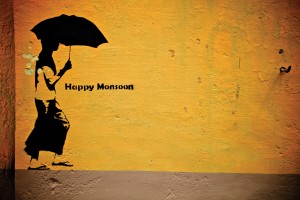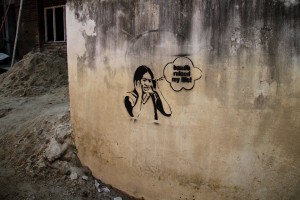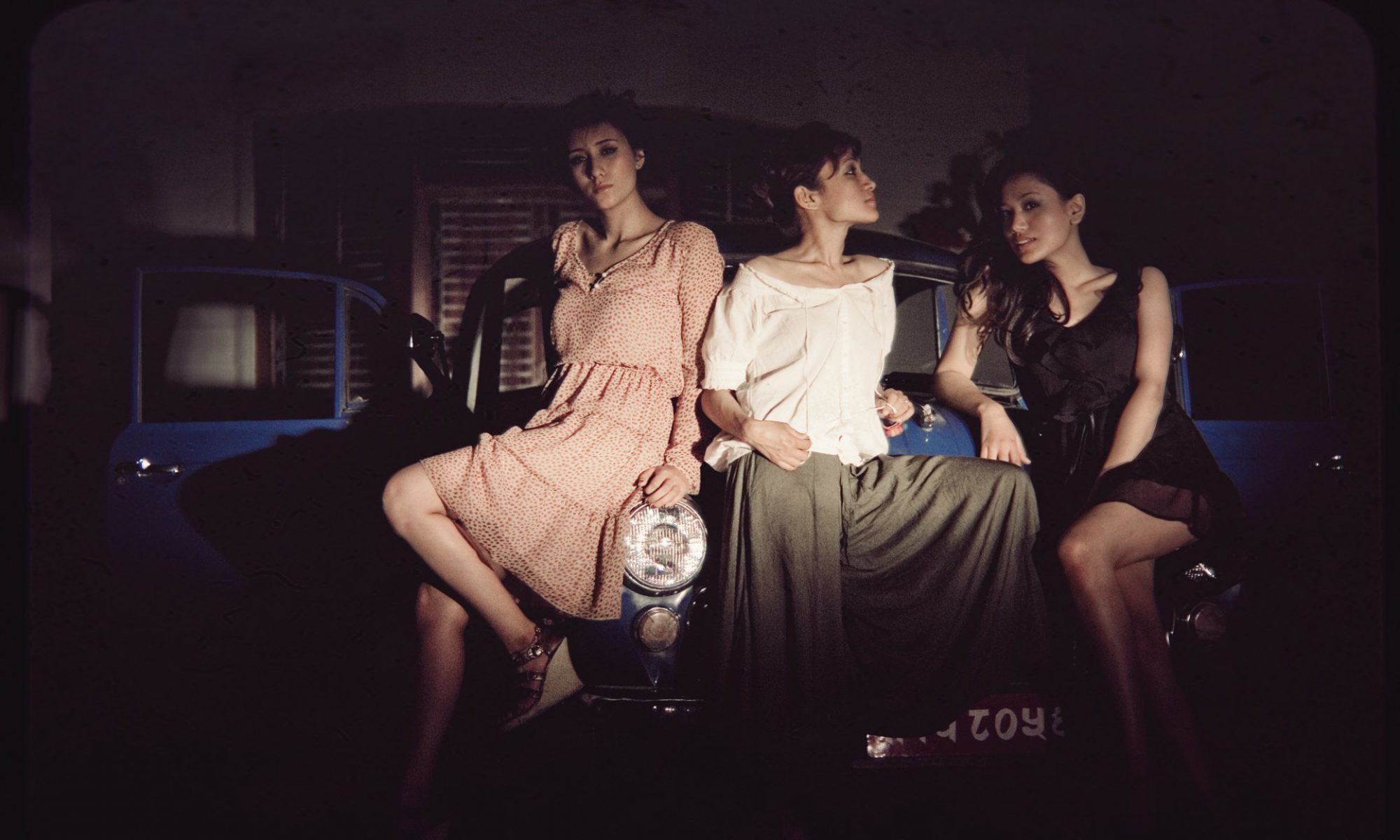 It looks like street art has taken Kathmandu by storm. We interviewed Anya Vaverko, an artist and a witness to this growing culture, about how she sees, feels and participates in street art. Anya, who is also a photographer, a stencil artist and the co-founder of Sattya Media Arts Collective, talks about her line of street art and its place in Kathmandu.
It looks like street art has taken Kathmandu by storm. We interviewed Anya Vaverko, an artist and a witness to this growing culture, about how she sees, feels and participates in street art. Anya, who is also a photographer, a stencil artist and the co-founder of Sattya Media Arts Collective, talks about her line of street art and its place in Kathmandu.
We arrived at her office come creative workspace in Lalitpur where she was sitting cross-legged on the floor with her dog Kanchi. Born in Ukraine and brought up in the US, Anya has adopted Kathmandu as her home and is fluent in Nepali as could be seen on her sticker stencil that read ‘Dal bhat nai mitho!’
How did your journey in the street art field begin?
I have been doing photography and I majored in photojournalism from the University of Texas. When I saw the street art in Kathmandu I thought ‘so many people are doing it, so why not I?’ I really wanted to learn this form of art but I had no idea where I could learn it. So I posted something like that on Facebook and met a mutual friend who was into street art. Stencils are just cutouts from pictures and photographs that you spray on to achieve an image. I have been stenciling for about a year now.
Before that you were into photography then?
I still am! Stenciling is just something I do- it is not my career or anything, it is just something I use to express ideas. For example, when I was younger I used to write poems and stuff. When I want to say something, I just put it up as a Facebook status. Then I stopped writing poetry and nobody really cares about Facebook statuses. Sometimes when I feel mad about something and I have to express it in some way or the other, I put my energy into the artwork. Sometimes I really like a photograph and I turn it into a stencil and think of a message to put with it.
So when did you actually start doing street art?
Well, last month I had some free time so I got together with a friend and practiced some stencils. I didn’t really spray on a wall when in the US because I was still learning. My friend had a lot of art space where we prepared a bunch of stencils.
Does it take a long time?
It doesn’t take a lot of time. You just take a picture, cut it out, spray over it. Usually it takes one or two days. My most intricate stencil took around two days with me spending every bit of my free time cutting it out. But you still need the right energy and the right vibe to do it the proper way.
How different is it from other forms of art?
The thing about stenciling is- anybody can do it. You can recreate the same image over and over again. Other forms of art cannot be reproduced the same way- you’d need to copy it precisely and draw over it’¦ with stencils, you just cut it out and spray over it. It is a simple thing and a lot of people can do it.
What kinds of ethics are attached to this form of art?
With street art, I see to it that I am not doing it on someone’s front door or on a property. In Kathmandu there are a lot of spaces that are nobody’s property. It should not be harming someone in anyway and should usually have a purpose. If a company is doing a really terrible thing, for example, and you want to draw on their wall as an act of protest, then that might be a pretty good reason. Otherwise, if you are just doing artwork to make the place look nicer then why do it where it harms someone?
What do you have to say about the ethics of the content of the street art?
The guy whom I learnt stenciling with, well, he is not the innocent type and he is some kind of activist too but he is used to tell me- there is so much negativity around’¦ people just come and scribble obscenities all over the walls which has no point at all.
 Banksy makes very strong statements without ever using offensive language-half the time he doesn’t even write anything. He is just clever the way he does it. What I am saying is, you don’t have to censor yourself and put up pictures of flowers and bunnies. Express yourself but be clever about it. Not everything has to be a negative statement and not everything has to be a positive statement- it can just reflect your mood.
Banksy makes very strong statements without ever using offensive language-half the time he doesn’t even write anything. He is just clever the way he does it. What I am saying is, you don’t have to censor yourself and put up pictures of flowers and bunnies. Express yourself but be clever about it. Not everything has to be a negative statement and not everything has to be a positive statement- it can just reflect your mood.
How have people been responding to your art?
Most of the time, people don’t even know that it was me who did the art work. Some that I did on a framed glass and hung around here gathered response like ‘Oh hey, you made that? I used to see it whenever I passed this way and it always made me laugh.’ There have been good responses so far.
What is the role of your organization- Sattya Media Arts Collective?
My organization is not directly related to this art but Sattya is basically a research center for filmmakers, photographers and media people. Sometimes we just show movies and documentaries and sometimes we hold workshops for things like creative writing and photography. Everybody is welcome here. There were people who wanted to learn stenciling and Sattya could be a platform for it because it is where we share and learn things. It is kind of a creative space for people.
How long have you been in Nepal?
Eight years-coming and going. I was nineteen when I first came here.
What kind of changes in the scenario of street art have you seen here?
People have begun taking up street art these days- there is this one near the Himalaya hotel which has replaced the political slogans. First, aesthetically it looks better and second, it drew people together to do something good.
Do you think it will make a difference-even the slightest, in these times of political disorder?
I don’t think it will shake up the leaders or something because I don’t really know WHAT it takes to shake them. Like I said, it is a means of expressing and I don’t think it will make a lot of difference whatsoever.
What, related to art, bothers you the most in Nepal?
Advertising is getting way out of hand here. I mean, in the west it is worse but Nepal is quickly getting there. You cannot escape them’¦companies are buying space and it is crazy! I don’t see how the space belongs to them more than anyone of us. Somehow their slogans are considered more ‘legal’ and ‘harmless’ than a piece of art put up on a wall just because they paid money to do it.
What difference do you see personally between the convention of street art in the west and here?
I don’t really know because, like I said, I never did art back in the US. One thing- in the US, street art can be serious crime which I really disagree with. That is what I like about Nepal. There are walls that nobody really owns. I just wish they were not so commercial.
In the West, there are people who appreciate street art’¦ but sometimes they tend to look down upon you. In Nepal, people are curious and do appreciate it. My neighbour, a little kid, thinks it is utterly cool (laughs). It is interesting how street art is growing in Nepal. Just a year ago there were hardly any and today everybody is doing or talking street art. Before people mainly drew anarchy symbols, but now murals and art itself is cropping up. The city is starting to look better.
Anything for people who want to begin stenciling?
I would encourage it because it is kind of empowering. All your life, you walk around a city that you didn’t help design or leave a mark on. However, don’t do anything random. Let it at least have some meaning. Express yourself but don’t offend unnecessarily.
